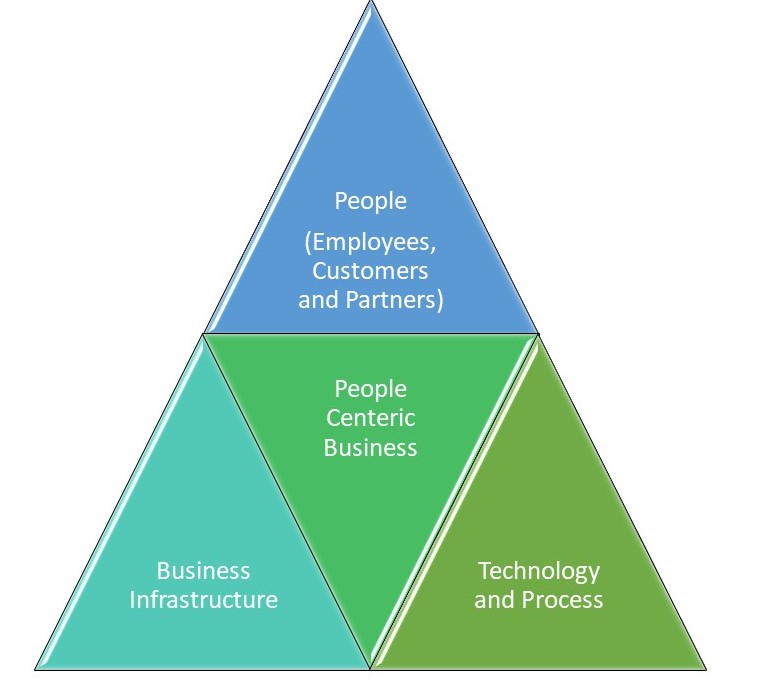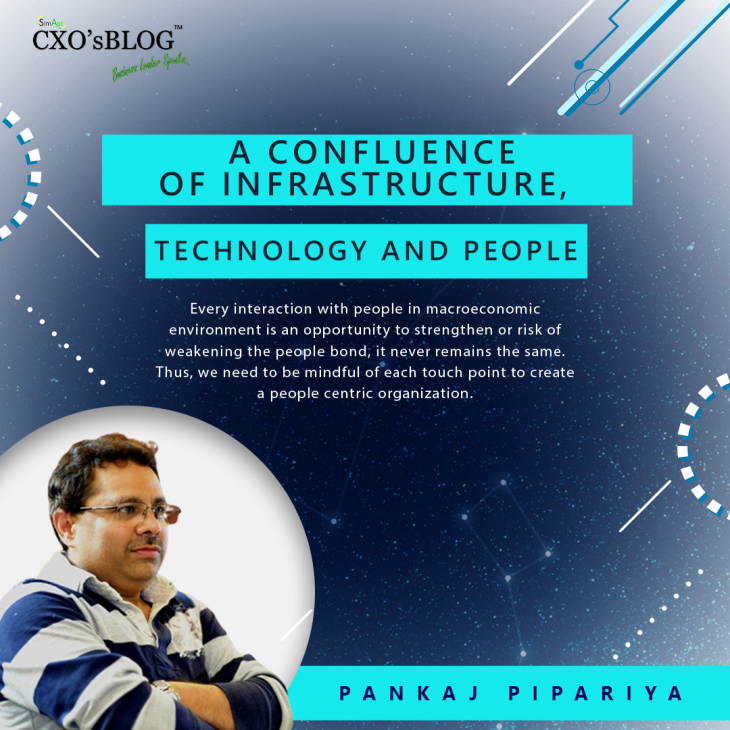Author: Pankaj Pipariya
Do you know People (Employees, Customer, Investors, and Business Partners) generates more data points in a company than any other factor? Invasion of mobile phone has accelerated the pace of data generation. A research said, an average person looks at his/her mobile screen more than 600 times a day. Social media has already taken world by a storm with an exponential growth of more than 80% per annum. Internet speeds are increasing day by day, with fibre networks being made available across nooks and corner of the country. The work boundaries have melted with anytime anywhere working condition. This phenomenon is something, which is also talked in business circles under the new strategy of SMAC (Social, Mobile, Analytics and Cloud) or CAMSS (Cloud, Analytics, Social and Security). Indeed, this is an era of data and digitization for run business.
A business sustainability is usually driven by following three fundamentals as illustrated in the diagram below:

- Business Infrastructure: During the industrial revolution era, 5 M’s of business management were conceptualized as: man, materials, machines, minutes, and money. Materials or the infrastructure has changed the perspective with the transition from manufacturing to service economy in past few decades. Generally, an investment on infrastructure is directly correlated to the business returns, but these returns are diminishing in nature. For example, if you have a business infrastructure of 10 manufacturing plants or 10 ODC’s (Offshore Development Centres) and you decide to double it up. It does not mean that your business returns will get doubled up too. Hence there is a need to have an optimal level of business infrastructure and focus on improving efficiency by working on technology, systems, and processes.
- Technology and Process: Ever since the evolution of wheel, mankind has been striving to improve efficiency to get work done. The same logic applies in workplace too with the advent of not only technology and processes. These processes required standardization, which gave birth to QC (Quality Circles), Six Sigma, ISO, CMM and other quality certifications. With the globalization happening, these certifications also became a hallmark to highlight the business resiliency and win global work assignments.
- People: Other day during a project kick off meeting, my client commented, “People like to buy from people, whatever corporate hat we wear”. This statement talks about the power of relationship management in business. In my earlier article, I wrote about the trusted adviser concept. Hence nurturing trust is a fundamental to build relationships, which along with a proven delivery model will culminate into business agreements. These business agreements could be a job agreement between employee and employer, an investment agreement with investors, product or service agreement with customers or transaction agreement with business partners.
As we know, the first two factors of business, which are, business infrastructure and technology and process, are “me too” factors and could be replicated, but no one can clone the people factor. Hence the People Factor is a critical differentiator in the business model.
Thus, from a business sustainability perspective, it will be prudent to have People centric business model, supported by an optimal level business infrastructure and robust technology and processes.
In the book, Employee First Customer Second, Mr Vineet Nayar spoke about inverting the management pyramid. This means, we need to empower our front-line employees to deliver customer delight. A similar concept is narrated in the diagram above for People Centric business, with an inverted pyramid and People being at the top. Here people need not be employees alone, but all people in the business ecosystem, like customers, investors, and business partners.
Every interaction with people in macroeconomic environment is an opportunity to strengthen or risk of weakening the people bond, it never remains the same. Thus, we need to be mindful of each touch point to create a people centric organization.
